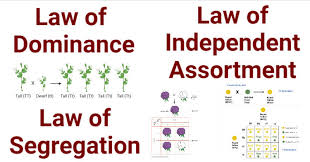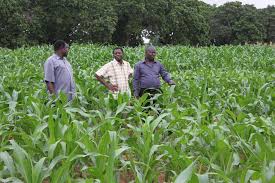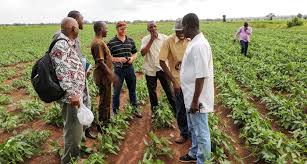
Crop improvement is a vital component of the agricultural industry, as crop products are essential to human existence. In the past, the expansion of arable land through clearing and plowing was a common method used by peasant farmers to increase food production.
However, this means of expanding agricultural land is seldom feasible today. The increase in global grain yields has been primarily achieved by cultivating more productive varieties and hybrids, greater use of fertilizers, and other improvement practices.
The breeding of more productive crop varieties remains the only stable method for increasing crop yields. In many countries, improved cultivars are rapidly replacing inferior local varieties.
The production, maintenance, and appropriate distribution of seed stock from improved varieties have led to remarkable increases in crop yields in various regions.
Some notable accomplishments in crop breeding include the development of disease-resistant varieties of wheat, rice, maize, sugarcane, potatoes, sorghum, and alfalfa.
This article covers various aspects of crop improvement, including breeding methods, hybrid seed production, and an exploration of Mendelian laws of inheritance.
Mendel’s Contribution to Genetics and Crop Improvement
Gregor Mendel (1822–1884) conducted the first quantitative studies on inheritance, publishing the results of his work in 1867. These findings laid the foundation for modern genetics and introduced the basic laws of inheritance.
Mendel’s conclusions were based on hybridization experiments, where he studied either one pair of contrasting characters (monohybrid cross) or two pairs of contrasting characters (dihybrid cross) through crossbreeding plants with these characteristics.
Read Also: Importance and Types of Pets
Mendelian Laws of Inheritance

From his experiments, Mendel formulated several principles, now known as Mendelian laws of heredity. These laws include:
1. The Law of Segregation (of genes): This law states that hereditary traits are determined by genes (called “factors” by Mendel), which are discrete, unchanging units of inheritance.
A gene for a particular character may have alternative forms (alleles) that express the trait in different ways. In a diploid organism, each character is controlled by two copies of the gene, which may be identical (homozygous) or different (heterozygous).
In the case of heterozygous organisms, one allele may be dominant and express the trait to the exclusion of the recessive allele. During meiosis, the two alleles segregate randomly into separate gametes.
2. The Law of Independent Assortment: This law states that the distribution of alleles for one character does not influence the distribution of alleles for other characters. It applies only to allelic pairs located on different homologous chromosomes. Essentially, alleles for different traits assort independently during gamete formation.
3. The Law of Paired Units: Hereditary units, known as genes, occur in pairs, with one unit coming from the mother and the other from the father.
4. The Law of Dominance: When two hereditary units in a pair are different, the dominant unit will express the characteristic, while the recessive unit remains unexpressed.
Overview of Crop Improvement Methods

Crop improvement has been ongoing since early human history, with initial efforts involving the selection of seeds from wild plants for cultivation. Significant advancements were made before the dawn of civilization, and further progress occurred once genetics became understood.
In the past century, crop breeding has evolved into a science, enabling predictable breeding outcomes. Notable increases in crop yields have resulted from the breeding and distribution of semi-dwarf, photoperiod-insensitive cultivars of wheat and rice, which are resistant to lodging under heavy nitrogen fertilization.
Crop breeding aims to increase crop productivity, stability, and economic efficiency. It also addresses social and humanitarian needs. For example, farmers now have smooth-awned cereals that do not irritate workers or livestock.
Consumers benefit from crops with higher protein or essential amino acid content, as well as sweeter and tenderer sweet corn and stronger wheat for lighter bread. Additionally, crops are being developed to make harvesting easier and to be more palatable or less toxic to livestock.
Objectives of Crop Improvement
Although crop breeders have made significant progress, a perfect crop variety has not yet been created. Each variety has limitations that prevent achieving maximum yield and quality.
The primary objective of crop breeding is to address these deficiencies and develop new cultivars with higher yield potential. The following characteristics are key objectives in crop breeding:
- Resistance to common diseases and pests
- Resistance to adverse weather conditions (e.g., drought, cold, heat, salt)
- Adaptation to varying photoperiods
- Resistance to heavy grazing or frequent cuttings
- Enhanced market quality (e.g., higher fiber, protein, sugar, starch content, better processing quality for food, textiles, beverages, etc.)
- Improved seed quality (e.g., greater longevity, high viability, larger size, non-shattering)
- Optimized growth habits (e.g., more erect or prostrate stems, more uniform flowering and maturity)
- Better harvesting qualities (e.g., stronger, shorter, or taller stalks, non-shattering traits)
- Higher productive capacity (e.g., greater vigor, faster recovery after cutting)
- Improved feeding quality of fodder (e.g., palatability, leafiness, nutritive value)
Read Also: Lynx Point Siamese Cat Breed Description and Care Guide
Methods of Crop Improvement

There are three main methods used in crop improvement:
1. Introduction: This method involves importing crop varieties from other countries as foundation stock for breeding programs. Introduced varieties may have superior productivity, disease resistance, or other useful characteristics that can be transferred to local varieties through hybridization.
The introduction of foreign varieties can enhance breeding programs, but it can also lead to a narrow genetic base, which may pose risks if new pests or diseases emerge.
2. Selection:
i. Mass Selection: This method involves selecting a large number of plants with desirable characteristics and propagating their progeny. It helps eliminate undesirable types.
ii. Pure-Line or Pedigree Selection: This method focuses on selecting individual plants and growing their progeny to observe their performance. Only superior strains are saved for advanced testing. This process may require several generations of selection to purify the strain.
3. Hybridization: Hybridization is a powerful method for combining desirable traits from two different varieties. The first step involves choosing parental plants with beneficial characteristics. The resulting hybrid plants express dominant and recessive traits from both parents, and subsequent generations are selected for the desired traits. Hybridization may require several generations to achieve uniformity and high performance.
Inbreeding and Backcrossing
Before producing hybrids, inbreeding may be necessary to ensure that the parent varieties are pure for the desired traits. Inbreeding can reduce vigor, but when appropriate inbred lines are crossed, the vigor can be restored.
Backcrossing is useful when adding a single new trait to an existing variety. It involves crossing the desired variety with another possessing the desired trait, and then repeatedly backcrossing with the original variety to recover the improved type.
Bulk Propagation and Hybrid Seed Production
Hybrid seeds can be produced through methods like detasseling or using cytoplasmic male sterility to prevent self-pollination. In crops that are predominantly self-pollinated, hybrid seeds are produced by using male-sterile lines. These methods allow the production of commercially viable hybrid seeds that maintain the desired traits.
In conclusion, this article has explored the foundational Mendelian principles of inheritance that form the basis for genetic studies in agriculture. Significant progress has been made in crop improvement over the past century, aided by advancements in genetic engineering, mapping, and cloning.
Traditional methods, such as selection, introduction, and hybridization, along with hybrid seed production, continue to be integral to improving crop yields and replacing inferior varieties with superior ones.
Through these practices, the agricultural industry continues to evolve, ensuring a more sustainable and productive future for global food production.
Do you have any questions, suggestions, or contributions? If so, please feel free to use the comment box below to share your thoughts. We also encourage you to kindly share this information with others who might benefit from it. Since we can’t reach everyone at once, we truly appreciate your help in spreading the word. Thank you so much for your support and for sharing!





